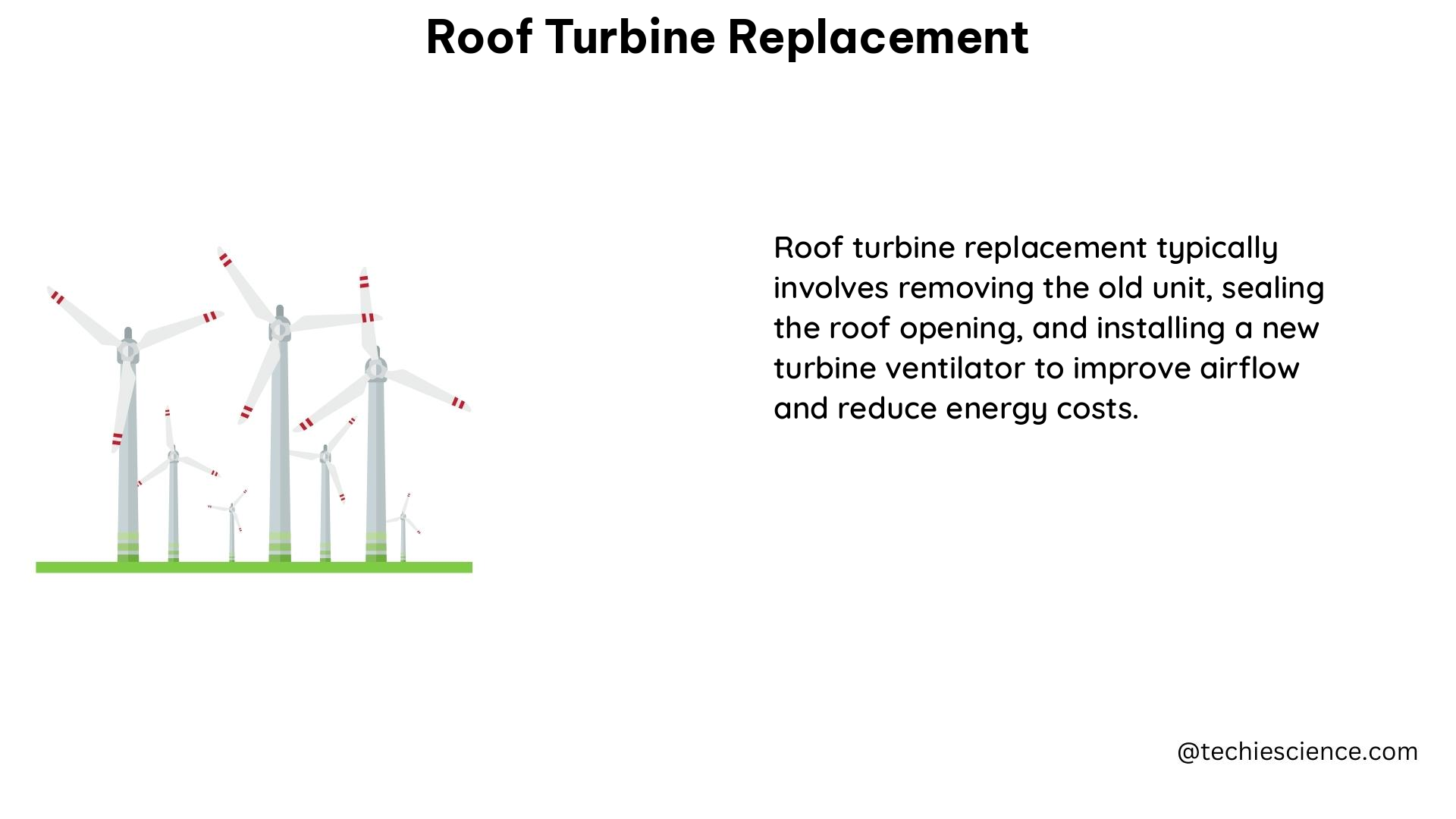Roof turbine replacement is a critical task that requires meticulous attention to detail to ensure proper fit, functionality, and long-term performance. This comprehensive guide will walk you through the step-by-step process, providing technical insights and practical tips to help you achieve a successful roof turbine replacement.
Measuring and Cutting the Roof Hole
The first step in roof turbine replacement is to measure and cut the hole in the roof. This process involves the following key steps:
-
Determine the Turbine Size: Measure the diameter of the existing roof turbine to ensure you purchase a replacement of the same size. Roof turbine sizes typically range from 12 to 24 inches in diameter.
-
Mark the Hole Location: Carefully mark the location on the roof where the turbine will be installed. This should be in an area with minimal obstructions and optimal airflow.
-
Cut the Hole: Use a reciprocating saw or a hole saw to cut the hole in the roof, ensuring it is the same diameter as the replacement turbine. Be cautious to avoid cutting through any roof trusses or other structural elements.
-
Reinforce the Hole: Consider adding additional roof framing or a roof curb to provide a sturdy and level mounting surface for the turbine.
Determining the Roof Pitch

Accurately determining the roof pitch is crucial for proper turbine installation and alignment. The roof pitch is the angle of the roof relative to the horizontal plane, and it can vary significantly depending on the roof design.
-
Measure the Roof Pitch: Use a digital angle finder or a roof pitch gauge to measure the angle of the roof at the turbine installation location. Roof pitches typically range from 3/12 to 12/12, with 3/12 being a low-pitched roof and 12/12 being a steep-pitched roof.
-
Adjust the Turbine Mount: The turbine mount should be adjusted to match the roof pitch, ensuring the turbine is parallel to the ground, not the roof. This will optimize the turbine’s performance and prevent any imbalance or vibration.
Mounting the Turbine to the Roof
Properly mounting the turbine to the roof is crucial for its long-term performance and stability. Follow these steps to ensure a secure and reliable installation:
-
Secure the Turbine Mount: Use heavy-duty lag bolts or screws to securely attach the turbine mount to the roof framing or the reinforced roof curb. Ensure the mount is level and properly aligned with the roof pitch.
-
Install the Turbine: Carefully lift the turbine and place it onto the mounted base, aligning the turbine’s base with the mount. Secure the turbine to the mount using the provided hardware, such as bolts or clamps.
-
Level the Turbine: Use a level to ensure the turbine is perfectly level, both horizontally and vertically. This will optimize the turbine’s performance and prevent any imbalance or vibration.
-
Seal the Roof Penetration: Apply a high-quality roof sealant or flashing around the turbine’s base to create a watertight seal and prevent any leaks.
Optimizing Turbine Performance
To ensure the roof turbine operates at its peak efficiency, consider the following factors:
-
Wind Direction: Observe the prevailing wind direction in your area and position the turbine’s blades to face the predominant wind flow for maximum power generation.
-
Turbine Clearance: Ensure the turbine has adequate clearance from nearby obstacles, such as trees, chimneys, or other roof structures, to allow for unobstructed airflow.
-
Maintenance and Inspection: Regularly inspect the turbine for any signs of wear or damage, and perform routine maintenance, such as lubricating the bearings, to ensure optimal performance and longevity.
Cost Considerations
The cost of replacing a roof turbine can vary depending on several factors, including the turbine size, the complexity of the installation, and the region in which the work is being performed. According to a Reddit post, a fair price for a roof turbine replacement is around $350, while other sources mention prices ranging from $400 to $500.
It’s important to note that the cost can also be influenced by the need for additional roof reinforcement, the complexity of the roof pitch, and any necessary repairs or modifications to the existing roof structure.
Conclusion
Roof turbine replacement is a critical task that requires careful planning, attention to detail, and technical expertise. By following the steps outlined in this comprehensive guide, you can ensure a successful roof turbine replacement that delivers optimal performance and long-term reliability. Remember to always prioritize safety, consult with professional contractors if necessary, and stay up-to-date with the latest industry best practices.
Reference:
– NREL Report on Wind Turbine Main Bearing Replacements
– Instructables Guide on Roof Turbine Installation
– AIVC Report on Attic Turbine Ventilator Performance
– Reddit Discussion on Roof Turbine Replacement Cost

The lambdageeks.com Core SME Team is a group of experienced subject matter experts from diverse scientific and technical fields including Physics, Chemistry, Technology,Electronics & Electrical Engineering, Automotive, Mechanical Engineering. Our team collaborates to create high-quality, well-researched articles on a wide range of science and technology topics for the lambdageeks.com website.
All Our Senior SME are having more than 7 Years of experience in the respective fields . They are either Working Industry Professionals or assocaited With different Universities. Refer Our Authors Page to get to know About our Core SMEs.